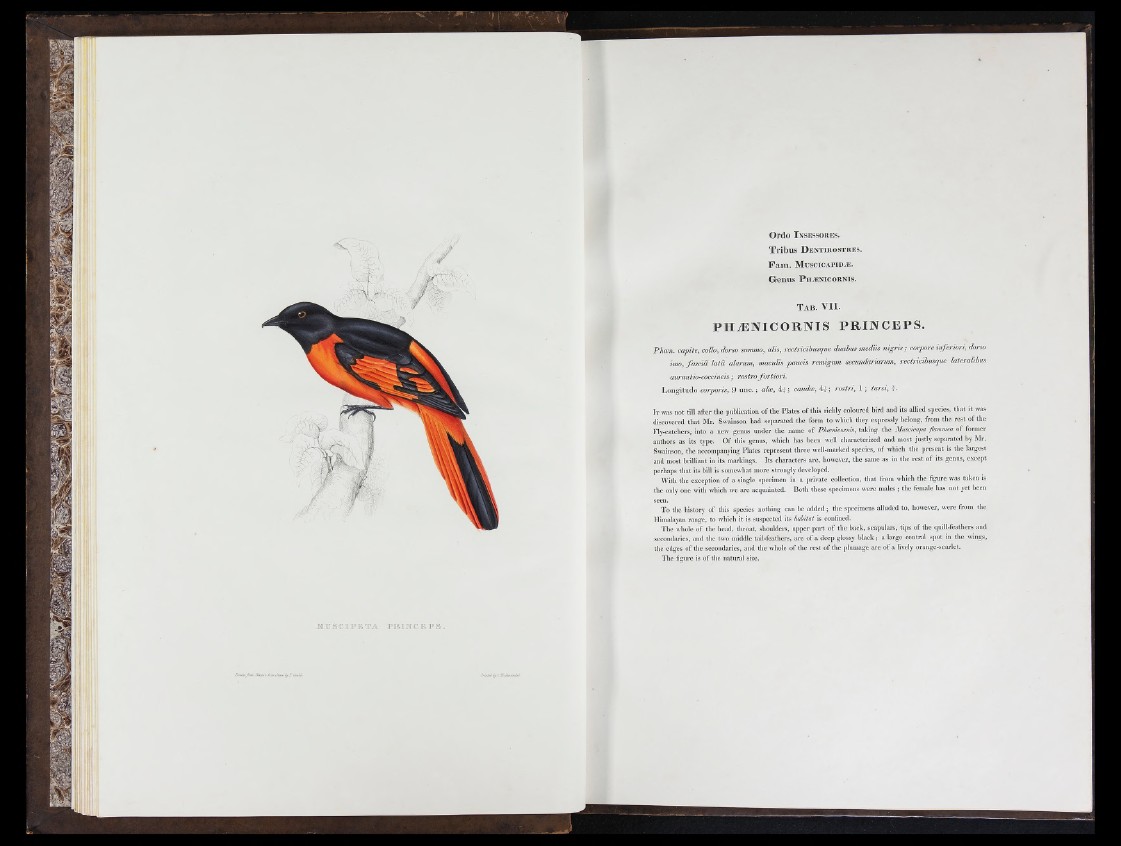
, 7 • ' • . /
Ordo I n s e s s o r e s .
Tribus D e n t i r o s t r e s .
Fam. MusciCAPiDAi.
Genus P h /En i c o r n i s .
T a b . V I I .
PHiENICORNIS PR INCE P S .
P hm n . ca p ite , colic, ib r s o summo, a lis, re c tn c ib n sq iie d u a h u s med iis n ig r i s ; corpore itife r io r i, elorso
into, f a s c i a lata, a larum , m a culis p a u c is r em ig um secimdariarum, re c tric ib u sq u e la te ra lib u s
a ura n tio -co c c in e is; r o s tr o fo r tio r i.
L o n g itu d o corporis, 9 u n c .; alee, 4 t ; caiidcc, 4 f ; ro s tr i, 1 ; ta r s i, -f-.
It was not till after tlie publication o f the Plates of this richly coloured bird and its allied species, that it was
discovered that Mr. Swainson had separated the form to wliich they expressly belong, from the rest of the
I<ly-catchcrs, into a new genus under the name o f P h a n k o rm s , taking the M u s c k a p a fiammca o f former
authors as its type. O f this genus, wliich has been well characterized and most justly sejiarated by Mr.
Swainson, the accompanying Plates re])rcscnt three well-marked species, of which tlie present is the largest
and most brilliant in its markings. Its characters are, however, the same as in the re st of its genus, except
perhaps that its bill is somewbat more strongly developed.
With the exception of a single specimen in a private collection, that from which the figure was taken is
the only one with which we are acquainted. Both these specimens were males ; the female has not yet been
seen.
To the liistory of this species nothing can be added ; the specimens alluded to, however, were from the
Himalavan range, to whicli it is susjicctcd its h a b ita t is confined.
The whole of the head, throat, shoulders, upper p a rt o f the back, scapulars, tips o f the quill-feathers and
secondaries, and the two middle tail-feathers, arc o f a deep glossy b la ck ; a large central spot in the wings,
the edges of the secondaries, and the whole of the rest of the plumage are of a lively orangc-scarlct.
The figure is of the natural size.